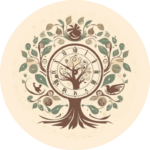Imagine that it’s 1554, and you’re the father of a young girl who is unwell. You write to a friend of yours, who is a physician, describing her symptoms, which include her being ‘pale, as if bloodless’. And this is the reply you get: The doctor continues, writing that the ancient Greek physician Hippocrates suggests that So… the solution for …
What Made a 17th-Century Midwife Good at Her Job?
Percivall Willughby (1596–1685) despised the midwives of his time. In his 1670s book, Observations in Midwifery, he intended to ‘inform the ignorant common midwives’, whose brutal methods were responsible for so many deaths – according to him.
A Grip on the History of Forceps in Medicine
On a cold winter evening in 1600, Peter Chamberlen the Younger found himself attending to a labouring woman on the outskirts of London. The mother-to-be had been in labour for over 48 hours, and the situation was dire. Despite his wealth of experience, Peter feared that both the mother and child might be lost.
Giving Birth in 17th-century England: A Tentative List
What to do, what to buy, what to organise, what to cook, what to read… I made so many lists when I was pregnant that it would take a new list to organise them all! Expectant parents are bombarded today with information about how to prepare for the arrival of a baby. Yet childbirth itself has never been more medicalised and arguably out of families’ control. But what about the past, before social media, Amazon wish lists, and insipid hospital food? Here’s a list of how to prepare for a new baby in 17th-century England.
‘Let Nature Take its Course’: In Defence of ‘Gentle’ Midwifery
In the 16th and 17th centuries, a delivery room could be a noisy place. Childbirth was a social event, and birthing chambers were often full of women (friends, relatives, servants, midwives…), celebrating and helping the one giving birth. However, whenever I picture this scene, I remember how important it was to me that my birthing environment be calm and quiet.
‘…but the Art of Midwifry chiefly concern us’!
In her 1671 midwifery manual, the English midwife Jane Sharp defined the art of midwifery as ‘doubtless one of the most useful and necessary of all Arts, for the being and well-being of Mankind’. A midwife should combine theoretical and practical knowledge, even if the former was harder to obtain in a world where women could not attend universities and …







